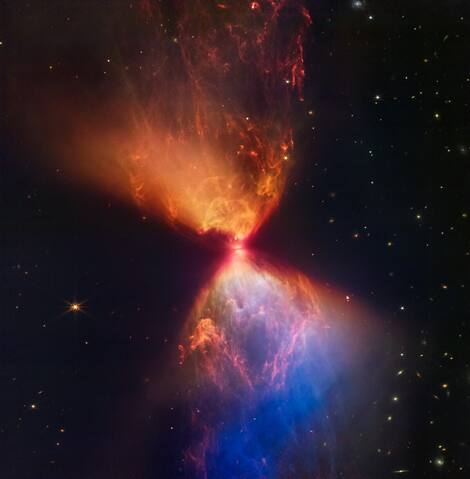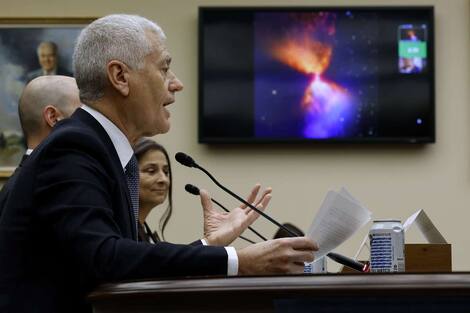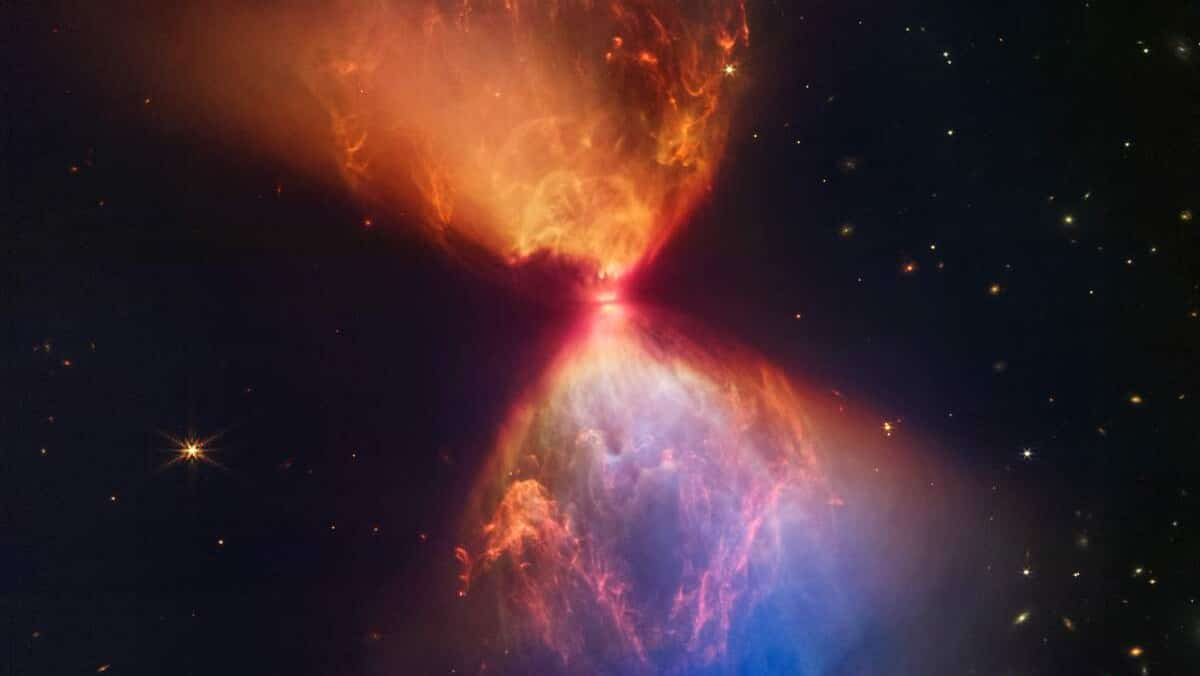The James Webb Space Telescope on Wednesday revealed glowing new images of a giant hourglass-shaped cloud of dust surrounding a star.
• Also Read: More Spectacular than Ever: See ‘Pillars of Creation’, New Image Captured by James Webb Telescope
• Also Read: Webb and Hubble captured detailed views of the asteroid impact
• Also Read: Neptune’s rings were captured by the James Webb telescope
Hitherto hidden, these orange and blue clouds were made visible by the telescope’s NIRCam instrument, which operates in the infrared, a wavelength invisible to the human eye.
The very young star, known as ‘Protostar L1527’ and located in the constellation Taurus, is hidden in the darkness at the edge of the swirling disk of gas at the neck of the hourglass.

AFP
But light from this protostar “leaks” above and below this disk, illuminating cavities in the surrounding gas and dust, NASA and the European Space Agency (ESA) explained in a joint statement.
Clouds are created when material ejected from a star collides with surrounding material. Dust is finer in blue areas and coarser in orange areas.
At only 100,000 years old, the protostar is in the early stages of its formation. She has yet to generate her own energy.
The black disk, roughly the size of our solar system, will feed the protostar with material until it reaches “the threshold necessary to initiate nuclear fusion,” the researcher noted.
“Ultimately, this view of L1527 provides a window into what our early sun and solar system looked like,” the two agencies added.

AFP
Located about 430 light-years from Earth, the Taurus Molecular Cloud is a stellar nursery of hundreds of nearly formed stars.
James Webb, who unveiled the first color images in July, is making observations 1.5 million kilometers from Earth.
One of the main goals of this $10 billion telescope is to study the life cycle of stars.

Prone to fits of apathy. Unable to type with boxing gloves on. Internet advocate. Avid travel enthusiast. Entrepreneur. Music expert.



